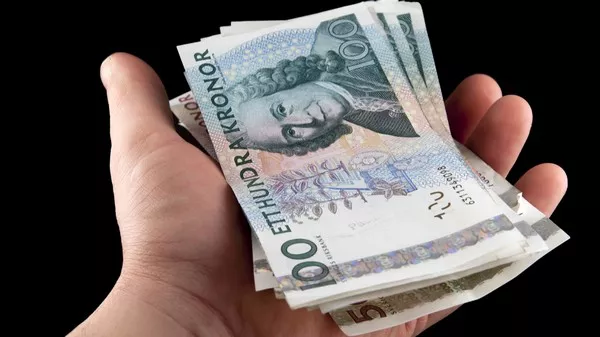The Swedish Krona (SEK) holds a unique position in the global financial landscape, embodying the rich economic history and cultural identity of Sweden. In this expansive journey through the realms of currency, we unravel the intricate tapestry of the Swedish Krona, delving into SEK historical evolution, distinctive symbol, currency codes, and the array of denominations that define its physical manifestation. From its roots to its contemporary significance, the Swedish Krona emerges as a captivating chapter in the narrative of global currencies.
Swedish Krona Currency History
The history of the Swedish Krona is a journey through Sweden’s economic milestones, reflecting the nation’s dynamic evolution and quest for monetary stability. To understand the Swedish Krona’s contemporary role, we embark on a chronological exploration of its historical roots.
The Swedish Krona’s story begins in 1873 when Sweden joined the Scandinavian Monetary Union, aligning its currency with Denmark and Norway. During this period, the Swedish currency was the Riksdaler, and the introduction of the Krona marked a departure from the silver standard to a gold standard.
The transition to the gold standard enhanced the Krona’s stability, providing a foundation for Sweden’s economic growth. However, the turmoil of World War I prompted Sweden to abandon the gold standard temporarily. Post-war, Sweden returned to the gold standard briefly before adopting a managed exchange rate system in the 1930s.
In the latter half of the 20th century, Sweden experienced economic shifts, including the decision to float the Krona in 1992. This move aimed to boost export competitiveness and align the currency with market forces. The floating exchange rate system remains a hallmark of the Swedish Krona’s modern financial landscape.
Understanding the historical context allows us to appreciate the Swedish Krona’s resilience and adaptability in the face of economic challenges, making it a symbol of Sweden’s economic prowess.
Swedish Krona Currency Symbol
Symbols transcend mere representation; they encapsulate cultural identity and historical context. The Swedish Krona is represented by the symbol “kr,” a succinct yet powerful identifier in the realm of global currencies.
The use of “kr” as the currency symbol is rooted in the Swedish language, where “krona” translates to crown. This symbolic choice reflects Sweden’s historical association with monarchy and crowns, providing a link to the nation’s regal past.
As a symbol, “kr” communicates not only the currency’s practical identity in financial transactions but also its connection to Sweden’s cultural heritage. The choice of a symbol grounded in the national language underscores the currency’s role as a cultural ambassador on the global stage.
Swedish Krona Currency Codes
In the intricate language of international finance, currency codes serve as the vocabulary that facilitates seamless communication. The Swedish Krona adheres to the ISO 4217 standard, employing the currency code SEK to ensure universal recognition in financial transactions worldwide.
The three-letter code “SEK” is integral to international banking, trade, and investment. It distinguishes the Swedish Krona from other currencies, preventing ambiguity and contributing to the efficiency of cross-border financial operations.
Understanding the currency code’s significance is paramount for global businesses, financial institutions, and individuals engaged in transactions involving the Swedish Krona. It enhances precision, reduces errors, and streamlines the complexities of the international financial landscape.
Swedish Krona Denominations
While the digital representation of the Swedish Krona is ubiquitous in electronic transactions, the physical manifestation of currency plays a crucial role in daily transactions. The Swedish Krona exists in various denominations, each bearing distinct features that reflect Sweden’s cultural and historical narratives.
Currency Notes:
20 SEK: Featuring renowned Swedish author Astrid Lindgren, this note pays homage to her literary contributions and cultural impact.
50 SEK: Showcasing images of iconic cultural figures, including Evert Taube and Greta Garbo, this note celebrates Sweden’s artistic heritage.
100 SEK: Depicting the famous soprano Birgit Nilsson, this note honors Sweden’s contributions to classical music on the global stage.
200 SEK: Featuring the dynamic innovation duo Dag Hammarskjöld and Gustaf Dalén, this note celebrates Sweden’s contributions to diplomacy and technology.
500 SEK: Showcasing the face of Sweden’s beloved King Carl XVI Gustaf, this note symbolizes the nation’s contemporary monarchy.
Coins:
1 SEK and 5 SEK Coins: Bearing the image of King Carl XVI Gustaf, these coins are essential for everyday transactions.
10 SEK and 20 SEK Coins: Featuring iconic symbols such as the Viking ship, these coins contribute to Sweden’s rich numismatic tradition.
50 SEK Coin: A commemorative coin, honoring significant events or anniversaries in Sweden’s history.
Exploring these denominations offers a tangible connection to Sweden’s cultural and historical legacy, enriching the everyday transactions that involve the Swedish Krona.
Conclusion
The Swedish Krona emerges not merely as a unit of currency but as a narrative thread woven into the fabric of Sweden’s economic and cultural history. From its inception in the Scandinavian Monetary Union to its modern role as a floating currency, the Krona reflects Sweden’s resilience, adaptability, and commitment to stability.
As a symbol with deep linguistic roots, a distinctive currency code, and a physical presence in various denominations, the Swedish Krona stands as a testament to the nation’s identity. Its ongoing narrative unfolds in the daily transactions, economic policies, and global interactions that shape Sweden’s place in the dynamic landscape of international finance.


